There are special requirements in sewing that must be followed to achieve a good result. The main rule is to lay out the finished patterns on the fabric taking into account the grain line. This is required so that the clothes are not skewed at the time of sewing, because the fabric is characterized by different tension levels in different landmarks. Below you can find out how to correctly determine the location of the longitudinal line.
What is a shared thread?
The warp thread (the direction can be determined by various methods, which simplifies the work when cutting out the product) is the longitudinal fiber. The transverse fibers, located perpendicularly, are called the weft.
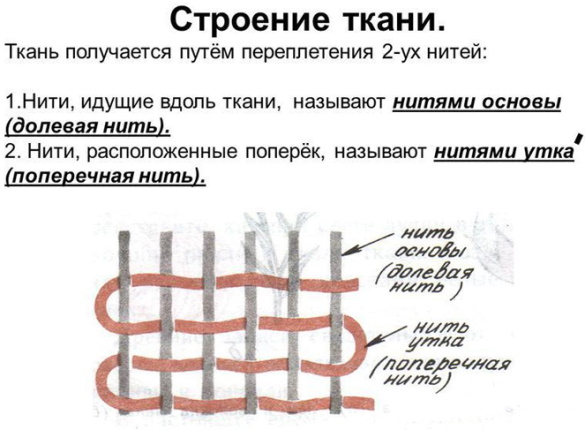
During the manufacturing stage, transverse threads pass through the longitudinal threads stretched on the machine, which are located parallel. Such interlacing creates a fabric material. The base is always placed along the fabric edge. It is strong, wear-resistant and elastic.
Why do they observe it?
The shared thread is quite strong and does not stretch well. In this regard, the patterns are placed lengthwise. It is necessary to control that the fabric cut is completely placed by the specified method: the base must be determined by the center of the cut, on which the marking is applied taking into account the orientation of the longitudinal lines, the weft should be placed at an angle of 90° relative to the base.
The cut material will stretch only in width. The sewn clothes will not be deformed in length and will not skew when worn or washed. The side seams or arrows will be in place, the ends of the sleeves will be even. Cutting is an important sewing element of any type of clothing.
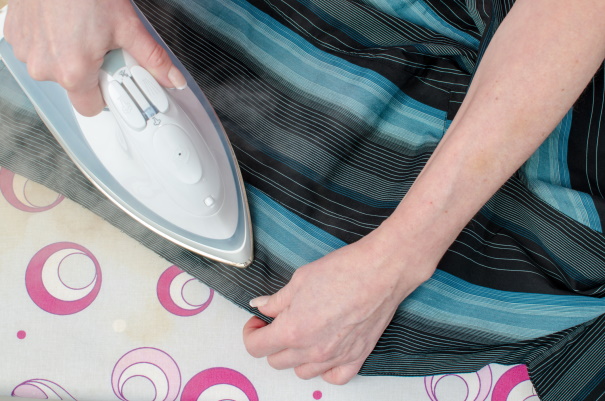
Therefore, it is essential to follow a number of simple rules:
- Before laying out the fabric, it is necessary to decatize it. When using light fabric, it should be sprinkled with water and ironed from the inside. When choosing woolen fabric such as gabardine, it should be ironed using a damp cloth.
- The canvas must be free of any deformations.
- If the fabric roll has different shades on different sides, all pattern fragments must be placed in one reference point. The same principle should be followed when using pile fabric. However, suede, panne velvet and flannel should be placed from top to bottom, while velveteen and velveteen, on the contrary, should be placed from bottom to top.
- All pattern pieces must be in the same direction if the pattern requires it. However, this requirement does not apply to cut-off material with a simple image in one reference point.
- The cell elements must match completely. This is required when cutting out the fronts of blouses or shirts.
How to determine the grain line on the edge
The shared thread (it is permissible to determine the base reference on the fabric by the edge or without it), unlike the transverse thread, goes along the edge, while the fabric does not stretch. The edges are the ends of the fabric that do not crumble.
It is much easier to install the base on the material when it is rolled up, because the base is always parallel to the edge. It is more difficult to install the base on a piece of fabric.
There are several methods for determining the longitudinal line:
- It is permissible to pull the fabric diagonally or in different directions, while the warp fibers will practically not stretch, unlike the weft.
- It is necessary to direct the fabric cut to the lighting. The main threads will always be even and make a clear structure.
- When cotton fibers are interwoven with wool, the former act as longitudinal threads. When cotton and silk fabrics are used, the latter will create a longitudinal thread.
If the width of the fabric cut is shorter than the length, or vice versa, you can use the edge. Thanks to it, you can correctly find the reference point of the base. This method is especially suitable for beginner seamstresses.
The fabric edge is always placed along the longitudinal line. Despite the fact that it is characterized by various parameters, can be gathered, with holes or without, it has one purpose that does not change.
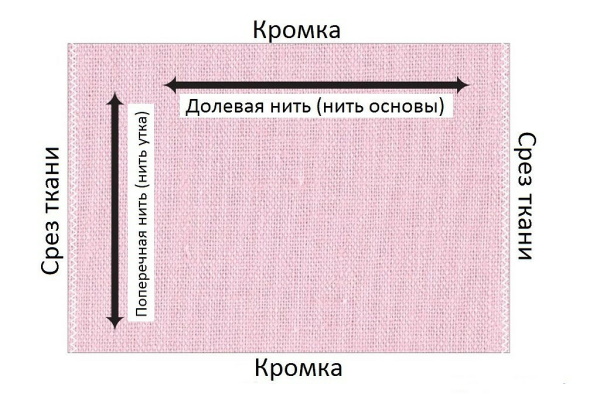
In rare cases, it is necessary to cut the fabric edge without preliminary markings. To determine the grain line, you need to look at the image: the longitudinal line will always be guided along the grain line. However, this method does not always help, since patterns can be applied to the material using different methods.
In this case, you can use the following tips:
- Pile fabrics. The base is often positioned relative to the orientation of the villi.
- Set by sound. To do this, the material needs to be stretched strongly and pulled sharply. The warp is determined by a clear and sharp sound, and the weft by a dull and not very noticeable sound.
- Ribbed with binding. Twill, satin and sateen materials have a rib that always runs along the longitudinal lines. When running your palm along them, you feel a fairly smooth surface in the area of the grain line.
The above methods make it possible to create a practical, high-quality and beautiful product. To achieve an excellent result, it is not advisable to neglect the advice and recommendations of more experienced craftsmen.
Non-woven materials
The grain thread (it is impossible to determine it, because the fabric material does not have the corresponding structure), as well as the transverse thread, is absent in the structure of non-woven fabric. The most famous fabrics are considered to be batting with felt, for which special weaving techniques are used.
The production of non-woven material began more than 90 years ago.
Various raw materials were used to create them:
- secondary raw materials;
- natural such as wool, cotton, linen and viscose;
- synthetic in the form of polypropylene, polyamide.
Various methods are used to bind the fibers: combined, thermal, chemical or mechanical. This saves on waste and the production process. At the same time, it is possible to create fabrics with new properties.
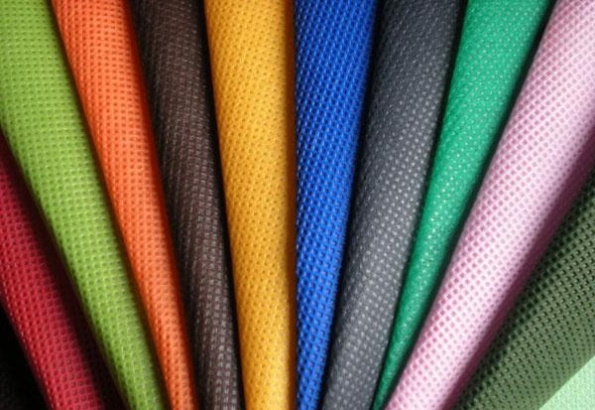
Non-woven fabric has the following qualities:
- absorbent;
- water-repellent;
- soft enough;
- fire resistant;
- very tough;
- resistant to wear and tear.
Nonwoven fabrics are often used in the production of items and tools for rescue services and medical workers, kitchen linens, bed linens and hygiene products.
The material can also be used as a lining and outer part of raincoats or coats, in the manufacture of blouses, dresses, dressing gowns, shirts. Nylon with elastane is used in the production of stretch sportswear or beachwear.
How to determine the grain in knitted fabric
The shared thread (its location on the knitted fabric can be determined by the lower tension) is determined quite easily in the presence of the edge, but in its absence the stretchability of the fabric will not help.
Knitted fabric has several varieties according to fabric:
- interlock: used in the production of indoor and sports items;
- jersey stitch: is a lightweight fabric used for dresses and shirts;
- ribana: is a hypoallergenic fabric made from cotton with a slight presence of synthetic impurities;
- footer: is a very soft material with a brushed interior, which is used for sewing indoor, sports and children's clothing.
The above fabrics do not have the transverse and longitudinal lines used in weaving. Instead, they use rows of loops with columns.
When storing knitwear in a roll, the base is very easy to install because it is always parallel to the edge. If there is only a piece of fabric, it is difficult to determine the grain line on it. In this case, tensioning the material will not help. For example, biflex stretches very well, but it does not lose its shape.
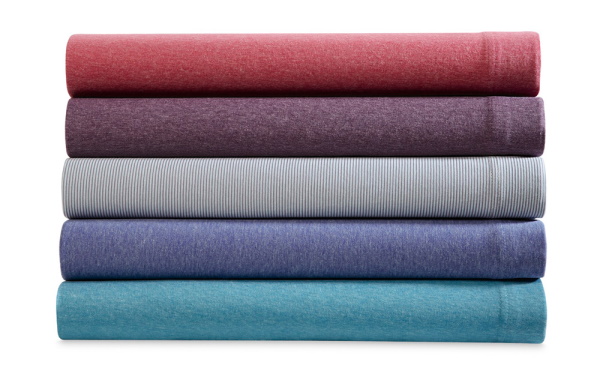
However, some types of knitwear will roll up along the base when laid loose. You can establish a longitudinal line reference by individual stitch columns, which always point to it.
Shared thread and cutting
Before laying out patterns on fabric, it is necessary to subject it to damp thermal action. If the procedure is not carried out, the sewn clothes will present several troubles in the future, for example, shrinkage. In this regard, this procedure should not be skipped.
The main principle of sewing is considered to be the rational layout of the pattern on the fabric. To do this, it is necessary to find the correct arrangement of elements on the material, leaving a small number of empty spaces between them, taking into account allowances.
Voids are the name given to inter-pattern lunges. Therefore, the main task is to minimize inter-pattern losses of tissue material.
Initially, you need to lay out the more massive elements, then the belt fragments, yokes, flaps, and facings. They are placed in the spaces between the main elements, taking into account the base reference. In this case, you can replace the placement of the elements relative to the size of the selected fabric cut.
It is necessary to examine the canvas on which the details will be located. To do this, it is necessary to take into account the presence of villi, rapport, pattern and shades in different directions.
The shared thread (it is important to determine the direction so that the model drapes well) is placed parallel to the fabric edge. At the cutting stage, it is necessary to adhere to its reference point for all elements of the product pattern. If there is no edge on the material, it can be stretched. Where the tension is insignificant, there is a base.
The pattern fragments are placed on the fabric in such a way that the reference line marked on the pattern is parallel to the fabric edges. Initially, it is necessary to increase the guide arrow of the longitudinal line to the lower end of the pattern fragment.
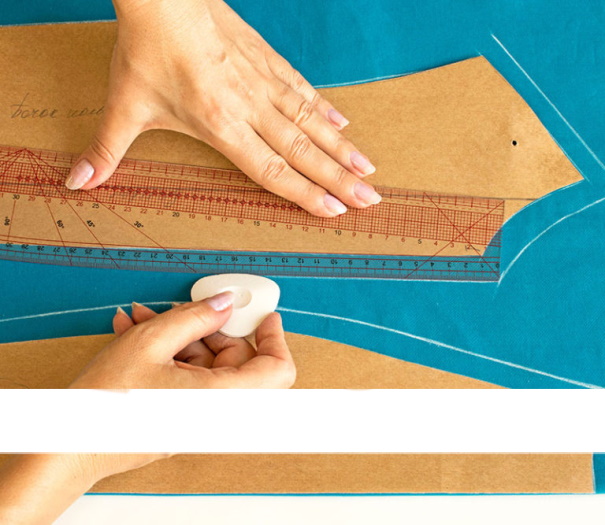
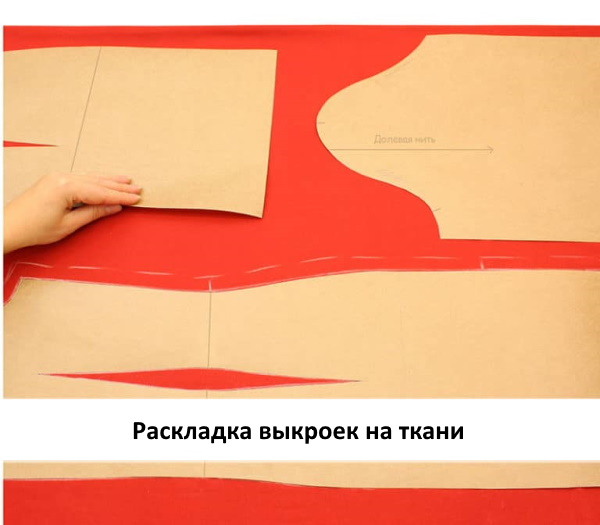
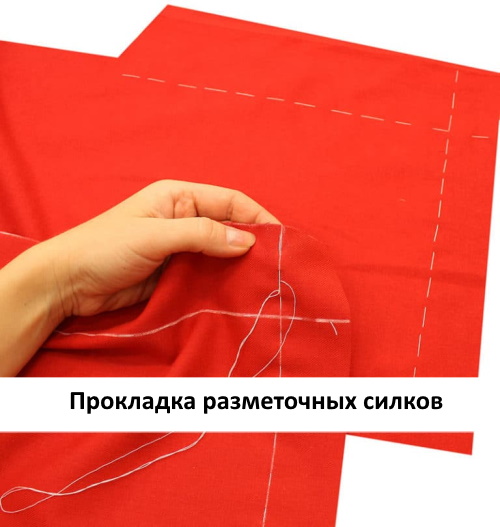
Afterwards, the lower section of the element should be fixed to the material, setting it from the thread arrow on the pattern to the fabric edge. Then the upper section is fixed at a similar distance. Finally, the entire fragment is pinned along the ornament.
For elongated trousers, there is no need to increase the guide arrow of the base with a ruler. It is enough to fold the pattern lengthwise into 2 parts so that the level of the step seam is similar to the side one almost to the knee area. The fold that is formed is considered a guide line.
If asymmetrical dresses are used for cutting, it is advisable to arrange the material in one layer so that the front area is on top. All other pattern elements should be arranged in a similar manner.
Cutting out individual fragments taking into account the longitudinal line reference:
| Details | Cutting rules |
| Back | At the stage of laying out the patterns on the material, it is necessary to take into account the location of the base. If the model requires the back to remain one piece, when cutting out the pattern, the center must be laid out on the fabric fold. In this version, the base will be across or along the back. If the back is to be stitched, the center of the pattern must be laid out on the edge or fabric cut, checking the coincidence of the image on the left and right. If the back is to be cut in a herringbone pattern, the base must go along the pattern at an angle of 45°. |
| Shelf | The front area of the bodice can be left whole, but the center of the pattern must be placed on the fabric fold along the transverse or longitudinal thread. With a split front, the center of the cut must be placed on the fabric cut or edge.
When cutting the front part of the bodice in a herringbone pattern, the thread should be at an angle of 45°. If the front includes 2 or more parts, the base should go through all parts, taking into account the type of model, or parallel to the center of the front. |
| Sleeves | When cutting out sleeves, the patterns should be placed on the material so that the base runs along the sleeve at the level of the highest point. In some versions, cutting is done along a bias or weft line.
If the part has not been completely sewn, it is permissible to make a topstitch from the elbow area. In this case, the seam should be placed along the base. The topstitches must be identical and they must be stitched before trying on. |
| Skirt | For a skirt with 1 seam, the patterns are placed on the material so that the base is located in the center of the fabric. A similar arrangement will be when cutting out a product consisting of 2 seams. The central sections of the elements should be located on the bend of the fabric.
When cutting out a garment from several wedges, the center of each is placed on the base. For flared skirts, the thread can be placed along the seam on the side or in the center of the fabric. |
| Collar | The patterns can be set so that the base runs along the center, the bottom line, at an angle of 45° to the center of the collar or at the level of the toe. When sewing clothes from a checkered or striped material, the pattern in the center of the collar should match the image in the middle of the back area.
When cutting out the collar, its base should be symmetrical to the collar line. In this case, the collar can be made stitched. |
| Cuffs | In relation to the style, the pattern is positioned in such a way that the base runs along or along the center of the cuff. |
| Pick-ups | The longitudinal line reference point should be similar to the shelf. If it is composite, it should include no more than 3 elements. At the same time, on translucent materials, the facing on the right side should be made whole, without stitching. |
| Other parts | For sleeve or neck facings, the base orientation should be similar to the sleeves or bodice. The facing can also be positioned on the bias. When preparing pockets, the base should be positioned according to the style or along the pocket.
The pattern of the flaps should be positioned so that the reference point of the base is across or along the flap relative to the style. When patterning bows and belts, the reference point of the base should run along them. The belt can consist of 2 parts, with the seam being on the side. For piping, frills and flounces, the base should be across or they are cut out bias. |
| Stitched fragments | If it is not possible to cut out the fragment completely, it is made stitched. However, this approach is acceptable for cellular material or stripes. On other materials, the seam will be visible. At the stage of pattern selection, it is recommended to place the seam at the junction of intervals or stripes.
Placing in a wide range between stripes or in the center of a wide stripe is not suitable. It is necessary to attach the overstitch from the front area using hidden stitches. |
When cutting out the pieces, it is essential to leave allowances for the seams, which should be specified at the stage of describing the finished pattern.
If this data is not available, the following seam allowances can be made:
- side level – 3 cm;
- neck – 1 cm;
- bottom line – 6 cm;
- sleeve seam area – 2 cm;
- cut end of small elements – 1 cm;
- shoulder seam – 3 cm;
- armhole – 1.5 cm;
- waist – 4 cm.




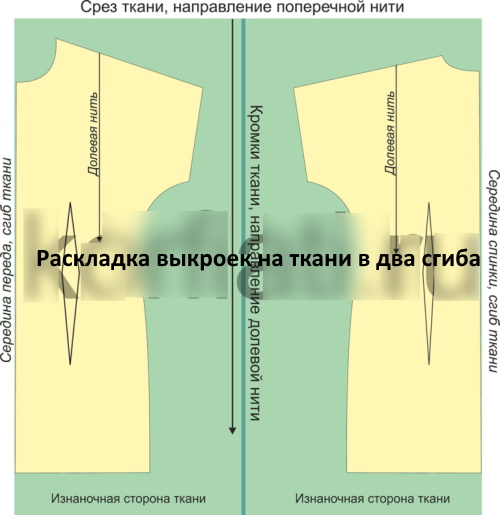
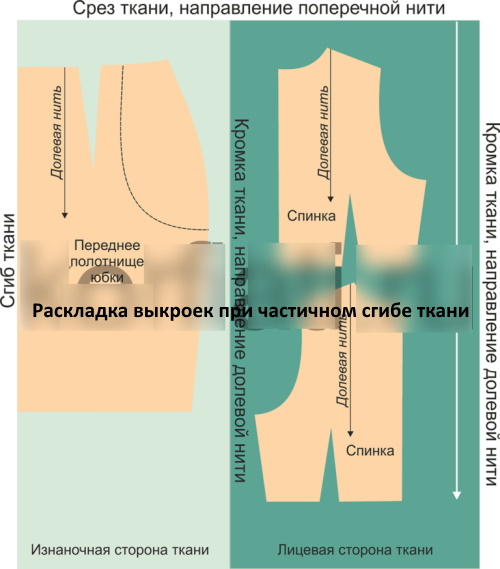
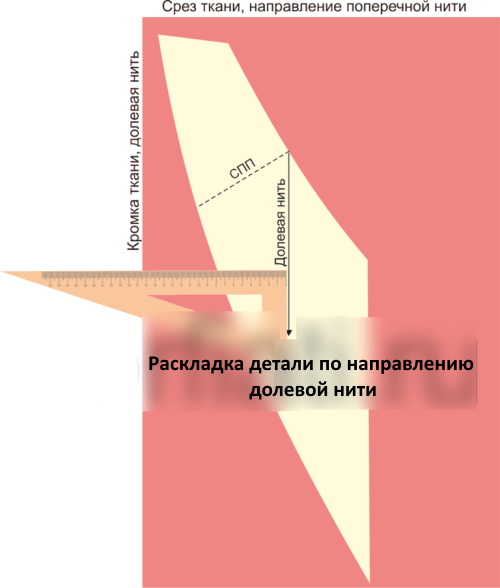
The width of the allowance will be affected by the thickness of the fabric: allowances will be larger if the fabric is loose and thick or crumbles. Often the cross-section of the fabric may be uneven, not running along the threads. To correct the situation, it is necessary to straighten the cross-section of the fabric by pulling the thread and shortening the edge along it.
Basically, large fragments are laid out initially, then small ones in the form of flaps, pockets, cuffs, facings, collars, collars. In rare cases, small elements are cut after fitting, since at the fitting stage the lines or shapes of the parts of the product can be changed.
When cutting out hard-to-reach areas, such as necklines or armholes, the scissors must be turned in such a way that the extra corners for seams are not cut off.
Recommendations for working with fabrics
General tips and recommendations for working with fabrics:
- On some materials it is quite difficult to match the back side with the front side.
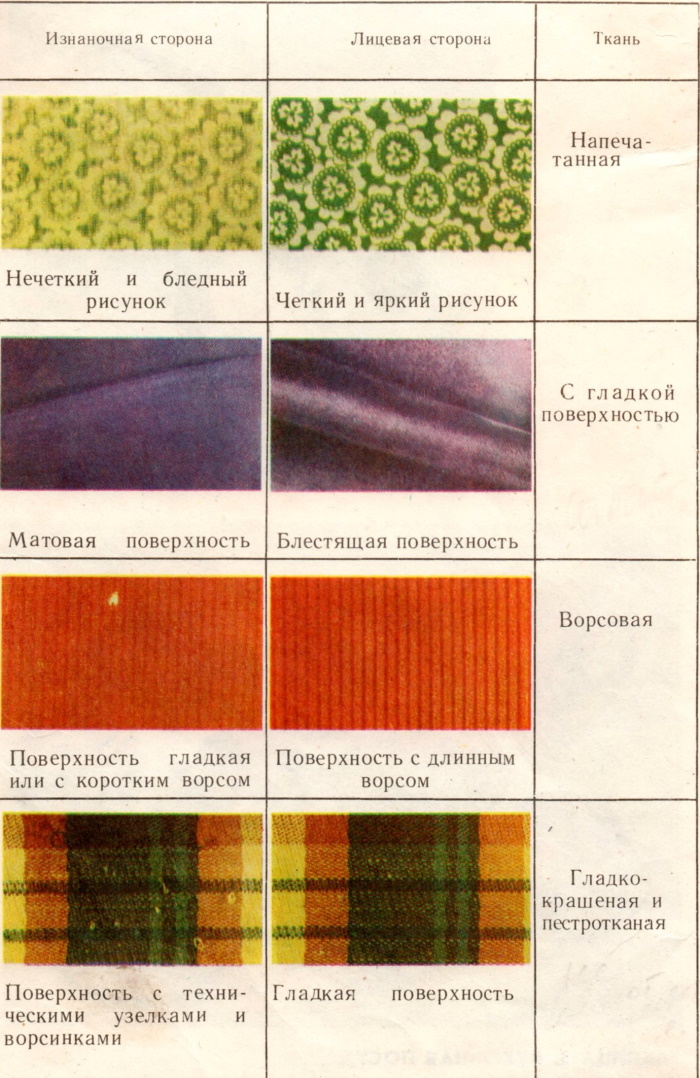
If there is no smooth surface, or if there are bumps or knots, the side of the fabric is the back side. The fabric edge often has a row of holes left after the material is removed from the machine. The holes should be inspected and run your finger over them.
On the back side, you will feel the needle going in and the edge will be smooth. If the surface around the holes is rough and you can see the needle coming out, then this is the front side of the fabric.
- After laying out the fragments on the canvas, you need to include seam allowances by cutting out the elements.
- When creating a pattern, you need to apply a base reference to the fragments. In this case, their reference should coincide with the longitudinal lines on the material.
- When creating clothing with a bias cut, a bell skirt or a half-sun skirt, the base reference point must be placed on the pieces at an angle of 45°.
When making clothes, it is necessary to follow simple steps: designing a model, preparing patterns, selecting fabric and cutting it, sewing, and finishing the finished clothes. At the same time, it is necessary to correctly determine the grain so that all the efforts are not in vain.
Video about sewing
Shared thread. How to determine on fabric:
